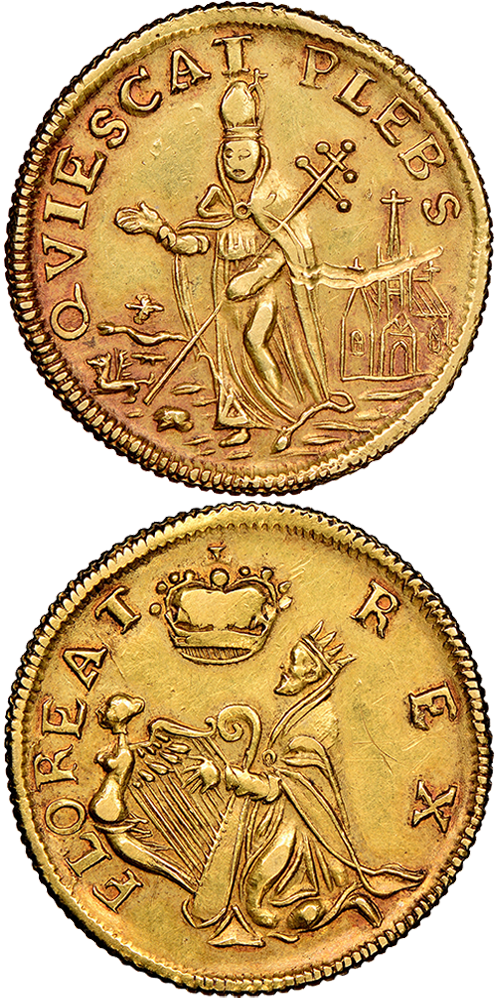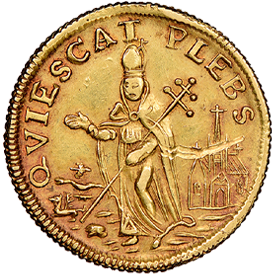More ink has been spilled over the St. Patrick’s tokens than on almost any other series among colonial era coins. Virtually everything about the St. Patrick’s token issues is unsettled and in dispute. They have been dated to the late 1640’s, to the late 1660’s, and to the middle years of the 1670’s. Their authorship has been claimed for Essex, Lord Lieutenant of Ireland, the Corporation of Dublin, and unknown royalist sympathizers. The mint that struck them has been named as Dublin, the Tower, and Edinburgh. They have been declared official coins and private tokens. Even their denominations are in doubt, the smaller sized pieces being called both farthings and halfpennies. Metrological evidence is equivocal but suggests that neither size piece was struck to an easily recognizable weight standard. The denominational names are applied more for convenience than out of any certainty of their original, intended values.
The few facts known about the coinage do not certainly tell us much about it. The coins have edge reeding and brass splashes on their obverses.
These facts have suggested to some that the coins may have been officially made by a legal, public authority. The larger pieces have the arms of the City of Dublin on their reverses.
This has been taken by some as evidence for their official nature, too. The obverse types of the smaller and larger issues are the same, as are the obverse and reverse legends. This suggests to some that the two issues are by the same maker and had related coinage purposes when made.
In 1681, Quaker Mark Newby brought with him to America a quantity of St. Patrick’s coppers.
Newby settled near modern day Camden, New Jersey.
In 1682, he pledged 300 acres of his land as surety and in return the legislature of West Jersey authorized him to circulate his coppers as halfpence. Crosby reports that some large size St. Patrick’s tokens had been found in the ground in southern and western New Jersey, suggesting that the bigger sized pieces circulated in New Jersey in the late 17th century. However, some collectors believe that since all coppers circulating in the country at the time were rated at twice their homeland values, the coins the West Jersey legislature actually authorized were the smaller sized pieces that we today call farthings. The conclusion is in some dispute, but it does serve to explain the very large number of dies found on the smaller size pieces and the comparative rarity of the large size pieces.
Despite the uncertainty about most things connected to the St. Patrick’s issues there is one thing that is absolutely sure about them. They have been actively collected by colonialists since before Crosby’s time. Fine points about whether the small or larger sized pieces were the ones brought to New Jersey in 1681 by Mark Newby do not seem to carry much weight with collectors. Both sizes are avidly sought after and included in mature collections of colonial coins.
Two names stand out among others in the field of St. Patrick’s pieces. For the larger sized ones, Bob Vlack’s catalogue of varieties is still the place to go for an attribution guide. For the smaller ones, the catalogue of John Griffee’s collection presents the largest offering of these.







